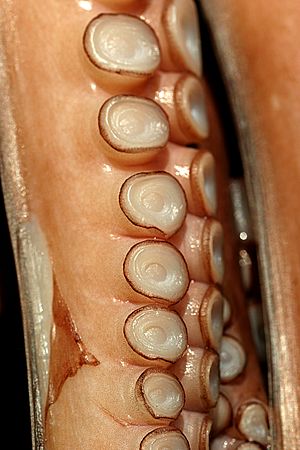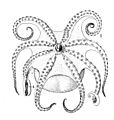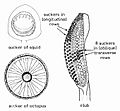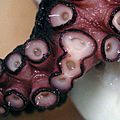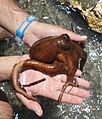Cephalopod limb facts for kids
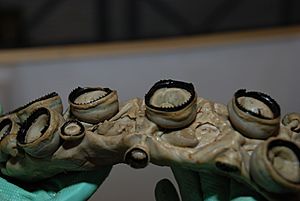
Have you ever wondered about the amazing "arms" and "tentacles" of sea creatures like octopuses and squids? These flexible limbs grow from their heads and surround their mouths, which are shaped like beaks. These special body parts help them move, hunt, and explore the ocean!
Contents
What are Cephalopod Limbs?
Cephalopod limbs are super flexible and come in two main types: arms and tentacles. The biggest difference is where their suckers are located.
Arms vs. Tentacles
- Arms have suckers all along their length, from the base to the tip.
- Tentacles usually have suckers only near their ends, often on a wider, club-like part.
Most octopuses have eight arms and no tentacles. They use their arms for everything! Squids and cuttlefish are a bit different. They usually have eight arms and two longer tentacles. These tentacles are often used to quickly grab prey.
What about nautiluses? They are also cephalopods, but they have around 90 limbs that are all called tentacles. Plus, they don't have any suckers at all!
How do Suckers Work?
Suckers are amazing tools found on the arms of octopuses, squids, and cuttlefish. They are also on the ends of the tentacles of squids and cuttlefish.
Parts of a Sucker
Each sucker is usually round and shaped like a bowl. It has two main parts:
- An outer, shallow part called an infundibulum.
- A central, hollow part called an acetabulum.
Both of these parts are made of strong muscles. They are covered with a tough, protective layer called a chitinous cuticle. This makes the suckers very durable.
What Suckers are Used For
Cephalopods use their suckers for many important tasks:
- Grasping: They can hold onto rocks or plants.
- Catching Prey: They use suckers to grab and hold onto their food.
- Moving Around: Suckers help them crawl along the seafloor or even climb.
Different Kinds of Limbs
The limbs and suckers of cephalopods can look very different from one species to another. Some might have smooth suckers, while others, like the giant squid, have suckers with sharp, serrated rings! This variety helps each type of cephalopod survive in its own unique way.
Images for kids
-
Arms and buccal mass of the squid Taningia danae. As in other Octopoteuthidae, the tentacles are absent in adults.
-
Oral view of male Bathypolypus arcticus with hectocotylus on arm III (left)




